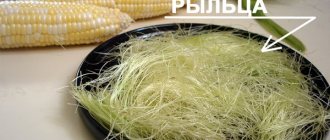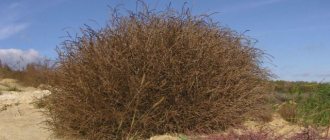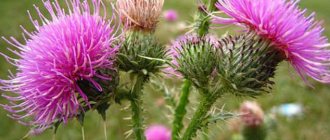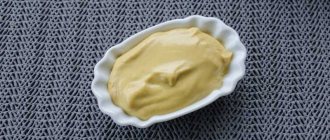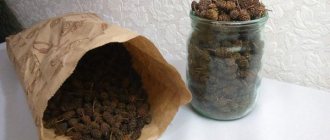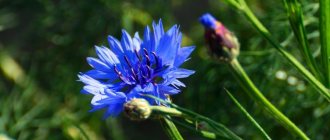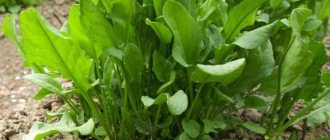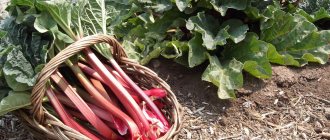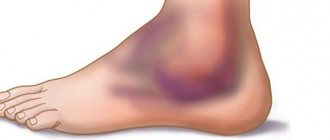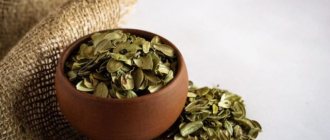Where does woodlice grow?
Woodlice (Stellaria media or, as this grass is popularly called: chickweed) is an annual plant of the clove family; many consider the grass a weed.
It has a weak stem of a climbing structure, which adheres and takes root in a nodal form, its height is from 10 to 35 centimeters. The branched stems of the plant can either creep along the ground or stretch to the top. The creeping branched stem of the grass is completely covered with small hairs that are capable of collecting moisture from the air into the plant and storing it there.
The leaves are located on the stems and have a rounded-oblong shape; they have cilia along the edges and seem slightly moist to the touch, hence the name of the grass - woodlice. The upper leaves sit on the stem, and the lower leaves are located on the petioles.
The flowers of the grass are white, small, connected in spreading inflorescences and resemble small stars, so another name for the grass is chickweed. The grass blooms for quite a long time, from May to August. And as a result of this, fruits appear - dark brown boxes with many seeds.
The fruit of the plant is an oblong or spherical capsule containing round, tuberculate seeds. The seeds in the box ripen from late July to October, during which time the box opens at the base.
Woodlice grows in vegetable gardens, orchards, on the banks of rivers and small streams, on forest edges, as well as near homes, along roadsides and even in garbage dumps. Prefers damp and moist places, close to water bodies.
The geography of its growth is quite extensive; woodlice grows throughout Russia, Europe, and throughout the temperate zone of the Northern Hemisphere. This grass causes many problems for gardeners and summer residents, as it multiplies quickly and is difficult to get rid of, which is why many people mistakenly consider woodlice to be a weed.
Contraindications
There are not many contraindications to taking chickweed. The miracle herb has a drawback - it lowers blood pressure, so hypotensive people should not use it. You should not be treated with the plant if you have an individual intolerance.
Woodlice has no more contraindications. It can be used by both adults and children.
Don’t rush to get rid of woodlice in your garden!
This inconspicuous herb will serve you well more than once.
It will heal, feed, rejuvenate and make you once again convinced that nature is able to provide a person with everything necessary for health.
We recommend reading:
- Preparation and use of medicines from hemlock
- Chickweed and its benefits for the thyroid gland
- Beneficial properties and uses of valerian
- How to take wormwood correctly?
- Useful properties and methods of using wormwood
- Comfrey and its uses at home
- Treatment of the thyroid gland with saline dressings
How to prepare and store chickweed
Woodlice blooms for a long time, from May to August. It is advisable to collect the herb in May; it is during this period that it is the freshest, juiciest and best suited for further use as a medicinal raw material.
For medicinal purposes, traditional healers use the entire above-ground part of the plant. Moreover, it can be used both fresh and dried. The collected grass should be dried in the shade and turned over every 2 days. For storage, it is advisable to use canvas bags or glass jars. The shelf life of dried chickweed herb is 1 year.
Features of woodlice
What is this herb? Where to look for it in nature? How did she deserve such “honor” in folk medicine? For what diseases is it effective and does it have any contraindications?
Chickweed.
Starwort is rigid-leaved, or lanceolate.
Chickweed Bunge.
Kinds
About 50 species of this plant are found on the territory of Russia (some sources give a different figure - 200 species). Chickweed, or chickweed, is the most common and valuable species, which is most often used as a medicinal raw material. What other varieties are known in folk medicine?
- Chickweed. People call it soapy, drunken grass. In addition to the European part, it is found in Siberia, the Caucasus and Central Asia. Unlike woodlice, the height of its stem can reach 40 cm. As a perennial weed, it colonizes fields, often grows in meadows, in damp forests, and loves the banks of reservoirs. It is a poisonous plant, so it is taken internally with great caution. The plant stimulates the functioning of the gonads in men and women. It is often used as a heart medicine, as well as for metabolic disorders and thyroid diseases. Externally - for abscesses. Useful for older people, acts as a tonic and restorative.
- Starwort is rigid-leaved, or lanceolate. No matter what people call this plant - chistets, kostenets, asterisk, cloves, hemp, absinthium, crane's grass, living, heart, love grass. A perennial plant, it also likes moist soil. More often it can be seen in forests and bushes. Refers to poisonous plants. In folk medicine, the aerial part and fresh juice are used. Useful for skin diseases - ulcers, scabies, non-healing wounds, bedsores, abscesses. Lotions and compresses are made from it. Decoctions, infusions, and fresh juice are taken internally. It relieves inflammation of the respiratory system, gastrointestinal tract, rheumatic pain, and helps with diseases of the cardiovascular system.
- Dubravnaya, or forest. It is poisonous, the height can reach 60 cm. It can more often be found in oak forests and other deciduous forests - in the European part of Russia. But this species is also common in North America (especially Mexico), the Caucasus, and Asia Minor. They treat cancer and fungal skin infections.
- Bunge. Perennial grass of high mountain, forest regions. Also found in meadows, river valleys of Siberia and the Far East. Widely used in folk medicine externally as an antiseptic, hemostatic and wound healing agent. Taken orally for diabetes, allergies, diarrhea, and joint diseases.
Not only a healer, but also a pest
For farmers, woodlice is a spring, annual weed that is difficult to control manually. The plant emerges in early spring and develops quickly. If it is not weeded out in time, it forms a beautiful but harmful carpet for useful seeds. Carrots, which take a long time to sprout, suffer most from chickweed. Woodlice loves moisture and often settles in vegetable beds with abundant watering. After weeding, it is not recommended to leave the weed in the beds; it is removed so that the seeds do not fall off (there can be about 10 thousand or more of them in one plant). Seeds can lie in the soil for several years and germinate safely every spring. Also, an uprooted plant will take root again if it comes into contact with damp soil.
However, some varieties of this grass are grown as an ornamental plant for their elegant flowers and continuous, beautiful carpet. It decorates flower beds and rock gardens.
Range of average chickweed
Where does woodlice grow? The plant loves a temperate climate and takes root well in northern regions. Some varieties can be found in high mountain subtropics. Most of the species are found throughout the European part of Russia, some take root in the Far East and Siberia. Woodlice feels good in dark places and moist soils. It grows near homes, in vegetable gardens and summer cottages. In the wild, its favorite places are damp glades and forest roads.
Chickweed is medium. Botanical illustration from the book “Bilder ur Nordens Flora” by K. A. M. Lindmann, 1917-1926.
Botanical characteristics of woodlice
This is an annual herbaceous plant. Its peculiarity is the formation of loose turf (carpets). The root system is weak, shallow, branched. The stems are thin, low (up to 10 cm), but at the same time they branch well and grow, covering the ground. The leaves are dark green; the petioles have hairs with which the plant absorbs moisture. Hence the name (due to the great love for water) - woodlice. The inflorescences of the plant are loose, few-flowered. The flowers are snow-white, small, star-shaped. It begins to bloom in May, blooms all summer, even in late autumn you can see delicate white stars on the green carpet.
There is another version of the origin of the name. A folk sign says: if the flowers of a plant have not opened in the morning after sunrise, it means it will rain. The woodlice plant responds to changes in humidity and air temperature. Gardeners jokingly call her the “rain predictor.”
Blank
It is preferable to collect grass in the spring, from the moment of flowering until the end of May. Collect the entire above-ground part of the plant, except for the roots. There are useful substances in the stems, leaves, and flowers. Dry, laying out in a thin layer, under a canopy. Do not allow sun exposure to raw materials. Dry grass is easily crushed by hand, after which it is packaged in linen bags. It can also be transferred to glass or porcelain dishes. Shelf life: 1 year.
It is important to remember: grass can accumulate heavy metals and other harmful substances from the air and soil. Therefore, it is so important to choose an environmentally friendly place to collect it.
Chemical composition and pharmacological action
What substances are included in woodlice?
- Rich composition of vitamins (C, E, A, K).
- Rich composition of microelements (especially a lot of potassium, magnesium, iron and cobalt).
- Saponins (toxic in large doses!).
- Lipids.
- Alkaloids.
- Essential oils.
- Tannins.
- Flavonoids.
What are the beneficial properties of chickweed herb?
- General strengthening.
- Hemostatic.
- Wound healing.
- Expectorant.
- Anti-inflammatory.
- Antimicrobial.
- Laxative.
- Tonic.
- Diuretic.
- Hypotensive (lowering blood pressure).
- Vasodilator.
- Secretory.
- Painkiller.
Indications
With such a wide pharmacological effect, woodlice in folk medicine, as well as in traditional medical practice, is used for many diagnoses and symptoms as an independent remedy and in complex treatment.
- Respiratory system. Abroad, woodlice was discovered as an effective expectorant by the German physiotherapist and priest Sebastian Kneipp. It helps well with pneumonia, bronchitis, softens and relieves coughing attacks.
- Diseases of the musculoskeletal system. The herb is useful for joints and muscles; it is used to treat osteochondrosis, rheumatism, arthritis, gout, myositis, and radiculitis.
- Urinary system. In complex therapy, they treat diseases of the kidneys and bladder, promote crushing and removal of kidney stones, relieve swelling, and remove excess fluid from the body.
- Digestive system. Used for diseases of the liver and gall bladder as a secretion stimulant. The herb also helps with hemorrhoids, enterocolitis, and relieves spasms and colic.
- The cardiovascular system. Helps with high blood pressure, vegetative-vascular dystonia, cardiac ischemia.
- Endocrine system. Woodlice is effective for diseases of the thyroid gland, metabolic disorders, including diabetes. The herb stimulates metabolic processes, removes fluid, normalizes digestion - all these factors contribute to weight loss. Therefore, it is prescribed for weight loss.
- Gynecology. Taken orally for cycle disorders and premenstrual syndrome. For cervical erosion and leucorrhoea, douching and tampons are prescribed.
- External use. Effective in dermatology and allergology. It relieves inflammation and relieves pain well. Treats skin diseases of fungal, allergic, bacterial, traumatic nature: dermatitis, eczema, scabies, bedsores, non-healing wounds, trophic ulcers, etc. Also used externally for eye inflammation.
- Avitaminosis. The herb is often prescribed for the prevention of acute respiratory viral infections and influenza as a natural complex of vitamins and microelements, a natural immunostimulating drug. The plant benefits people who have suffered serious illnesses to restore strength, as an antiscorbutic remedy.
- Anemia. Due to the high content of potassium and iron, it has a beneficial effect on the hematopoietic system and increases hemoglobin.
You can find information about the antitumor properties of woodlice and its use for cancer. There is no scientific evidence for this. However, the herb can be useful at the stage of recovery of the body in combination with other remedies.
Woodlice has few contraindications. It should not be taken if you have an individual intolerance, as well as with low blood pressure and during exacerbation of chronic diseases. Consultation with a doctor in this situation is strictly required. The side effects of this plant have been poorly studied. However, it is known that it contains a lot of saponins, which accelerate the breakdown of red blood cells and are toxic. The instructions do not indicate use in pregnant women and children. This issue must be resolved individually with your doctor.
Composition and beneficial properties of woodlice herb
Woodlice grass is a real storehouse of vitamins and nutrients. The plant contains essential oils and lipids, organic acids, carotene, sinalic acid, tannins, saponins, wax, many vitamins and microelements: magnesium, copper, iron.
- The high content of vitamins C and E in midge makes it indispensable in the treatment of anemia, vitamin deficiency, and scurvy.
- It has a positive effect on the functioning of the heart, strengthens the entire body and is a tonic.
- The herb is used as an anti-inflammatory, choleretic and analgesic.
- Woodlice can stop bleeding and heal wounds faster, improve metabolism, stimulate the cardiovascular system, and have a positive effect on the nervous system and gastrointestinal tract.
- Helps in the treatment of hypertension, gynecological problems, with the help of chickweed you can relieve joint pain due to radiculitis, arthritis, rheumatism, gout - the herb should be steamed and applied to sore spots.
- For skin diseases, rashes, dermatitis, eczema - take baths with woodlice infusion.
- An infusion of the herb is taken internally for diseases of the liver (even hepatitis), lungs, and liver.
- For severe weight loss, vitamin deficiency, weakness, heart disease, cholecystitis, use fresh chickweed juice or essence.
- Woodlice increases hemoglobin levels in the blood.
The infusion is prepared as follows: woodlice - 1 tbsp. pour boiling water over a spoon - 1 cup. Cover the container and leave it overnight, then strain. Drink a quarter glass of infusion before meals.
The woodlice decoction is prepared as follows: fresh grass - 200 grams, chopped and pour boiling water - 1 liter. Boil the broth over low heat for 10 minutes. Then let it cool to room temperature and strain.
The use of woodlice herb in traditional medicine recipes
One of the unique properties of weed grass is its ability to rejuvenate our body. What kind of diseases does it relieve: treats CVS, diabetes mellitus, calms the nerves, relieves diarrhea, and is used in cosmetology. Woodlice has many beneficial properties:
Choleretic, diuretic
The same recipe is used as a diuretic, choleretic, and also helps with thyroid problems. Chickweed juice will help prevent these problems. It is best to use it in courses - drink for 2 weeks and rest for 2 weeks. The juice should be drunk 3 times during the day before meals, 50 ml each, 15 minutes apart. In winter, infusions are made: a glass of boiling water with a large spoon of dry herbs. You are allowed to continue drinking intermittently for up to six months.
Expectorant (lung diseases)
To help yourself treat lung diseases, you need to brew tea from a weed plant. To prepare the product, you need to prepare dry wood lice - 2 teaspoons with 2 cups of boiling water. Dose per day – 2 cups. If you don’t like the taste, a little honey will correct the situation.
Healing
Lotions can help wounds and ulcers heal. Another option for the treatment procedure is baths. We will need dry leaves of string and chickweed. For 3 liters of boiling water, 1 glass of each herb. Everything should settle, and you can begin the procedures.
For vision
An infusion or juice is extracted from chickweed, it all depends on eye problems. For inflammation, it is good to rinse by brewing a few teaspoons of the plant in a glass of boiling water. And the juice should be dropped into the eyes (for cataracts, for example).
For lactation
In order for milk to flow, you need to prepare a remedy from honey and woodlice juice (all in equal quantities) and consume it several times a day half an hour before meals. To avoid a sudden flow of milk, it is better to start with one teaspoon, gradually increasing the dosage to a tablespoon.
For stomach and intestinal pain
In these cases, prepare a tincture from vodka (300 milliliters) and chickweed (one large spoon). Everything should be infused in a place inaccessible to light for about 2 weeks. The product must be taken half an hour before meals, diluting 20 drops of the infused product in a glass of water.
For cosmetic purposes
Our health is also our appearance. Mokrichnik is a raw material for masks, compresses and a face wash. If, for example, you have problem heels, then use a compress from a fresh plant, placing it in your socks overnight.
For psoriasis
- A wonderful remedy for psoriasis is made from dry ground woodlice mixed with melted chicken fat or Vaseline. The resulting cream is applied to the affected areas.
- An infusion of vodka is made from raw wood lice: the squeezed juice is mixed with high-quality vodka or moonshine in a ratio of 1 to 1. Drink the resulting product before each meal, 1 teaspoon.
For weight loss
If there is a need to improve the body's metabolism, it is necessary to take baths with chickweed infusion (a liter of boiling water per 2 teaspoons of raw material). To lose weight, it is consumed by adding it fresh to your regular dishes (in soup, salad, etc.). Drink half a glass of juice before meals every day for about 2 months.
For injuries and sprains
Chickweed is used for various injuries and sprains. To relieve severe pain, you need to collect fresh woodlice - one bunch, place it in a transparent plastic bag. Apply the bundle to the affected area for 2 - 3 hours, securing it with a loose bandage to prevent slipping. It is worth performing a similar procedure at least 3 times and the pain will go away.
Woodlice for joint pain
Chickweed heals sore joints due to its ability to relieve inflammation, reduce swelling and relieve pain. It strengthens connective tissues.
Crushed grass is tied to sore legs and joints. Alcohol tincture is taken internally. Place dry plants in a liter container and fill the floor with a liter of vodka. Fill the remaining free volume with cool water to the top. Leave for two weeks and take 10 ml before each meal.
For cracked heels
If you often experience various problems with your heels: cracking, calluses forming and simply feeling tired, especially towards the end of the day, our simple girl will help. To avoid such unpleasant sensations, take two full bags of mint woodlice.
Place a mashed bun on top of the surface of the foot, put a plastic bag on the foot, and a tight-fitting sock on top. You need to walk with such a compress for at least 2 - 3 hours. The treatment procedure is done 5 - 6 times. After such compresses, the heels become healthy and soft, like a baby’s.
Hand cream
The well-known chickweed is used in the form of a cream. To prepare, chop the plant and knead it with your hands. Crush it in a container with a fork, add any vegetable oil to the resulting mass and mix everything well. Place it in the refrigerator for a week. Here is an amazing vitamin cream that will quickly heal chapped hands and rejuvenate your face.
For burns
Grandmothers say that our friend woodlice is an excellent folk remedy for burns. The recipe is as follows: 1 tablespoon of chopped leaves and stems, pour a full glass of boiling water, let stand for two hours. The resulting infusion must be carefully filtered and can be used.
Increases hemoglobin
The same recipe will help to cope with a disordered heart, and to cleanse the blood vessels. Wood louse increases hemoglobin. Therefore, it is often recommended for use by women during menstruation.
Baths for skin inflammation
Another valuable property of chickweed is its excellent ability to relieve various inflammations. Baths are made with woodlice infusion. You need half a jar (0.5 liters) of raw materials, fill 1 liter of boiling water, leave for 15 - 20 minutes, cover with a towel, then pour into the bath. The recommended time for taking a spa procedure is no longer than 20 minutes.
For children from urinary incontinence
Chickweed also helps children with bedwetting. In this case, use a decoction and fresh or steamed dried; put on feet in socks for the whole night.
Contraindications for the use of woodlice
Despite the fact that woodlice has so many advantages, it can be harmful to health, keep this in mind when using it.
Woodlice in culinary dishes and medicines should not be used by people with low blood pressure. And people with stomach diseases should not use alcohol tinctures, as alcohol itself can irritate the gastric mucosa. It must be borne in mind that woodlice can cause allergic reactions in individuals who are especially sensitive to woodlice components.
When collecting woodlice, it is necessary to take into account that it must be collected in environmentally friendly places, away from roads and railways, and away from landfills. How to properly prepare medicinal herbs, read this article.
Woodlice can be used both fresh and dried. It is collected during the entire time it is growing. It is recommended to dry it at a temperature of about 40⁰.
Key Facts
Woodlice belongs to the Carnation family. The Stellaaria species includes about 100 subspecies, growing mainly in Eurasia, western North America, and several species in the mountains of other continents.
In our country, it is present in abundance throughout almost the entire territory, in mountainous areas, usually in places affected by human activity.
Originally native to Eurasia, chickweed now grows throughout the world, including polar regions. This is a plant that is not easy to eradicate, it is very persistent, strong, blooms and grows throughout the year.
Chickweed (Stellaria media) is an annual herb that is very persistent. It is relatively easy to cultivate, although it is not necessary. Produces flowers throughout the growing season, even in hot and dry conditions. Chickweed grass grows in a unique, branched way. There is a thin line of white hair on the stems.
The flowers are small, white, star-shaped, growing at the tips of the stems and in the corners between the branches. Each of the 5 petals is two-lobed, so the flower may appear to have 10 petals. The leaves are oval, pointed, smooth or slightly fleecy, growing up to 5-50 cm in length.
Article for you:
Beneficial properties of fennel for newborns and mothers, treatment of colic, contraindications
Chickweed grows in many areas in a wide range of habitats and soil structures. This is one of the most common weeds found in lawns, fields, pastures, and deciduous forests.
